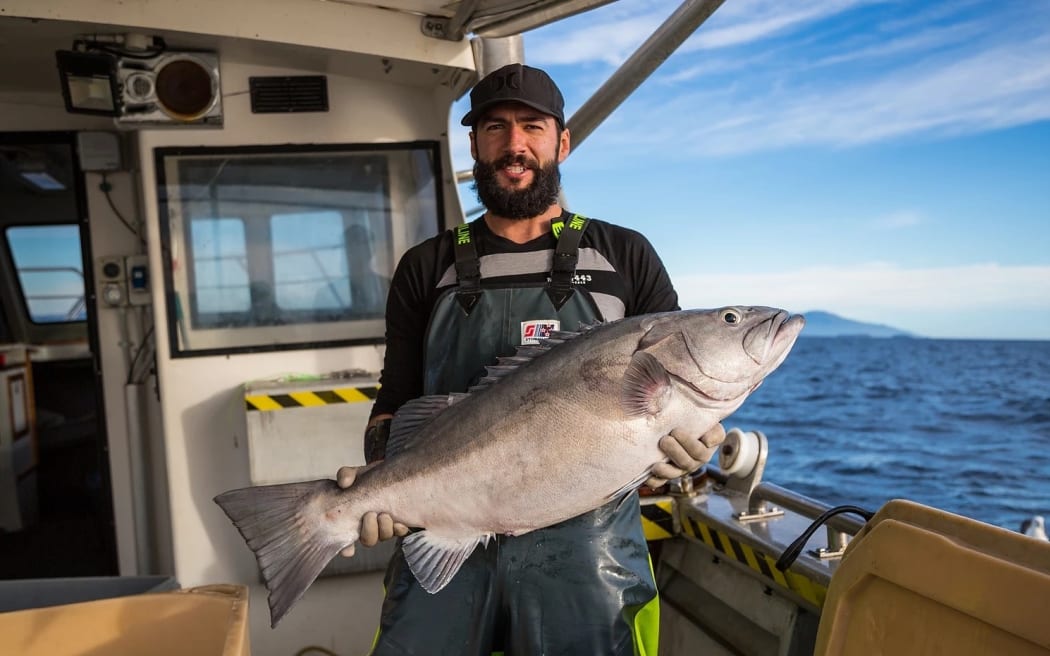Fisher Nate Smith is passionate about sustainable fishing - he's the driving force behind Gravity Fishing which operates between Southland and Rakiura/Stewart Island.
He is the latest generation in a long-running line of fishers on the Island and as well as supplying some of the country's high end restaurants he takes tourists out on fishing charters.
Nate also has his sights set on revamping the fishing quota system and believes a direct relationship between fishers and customers is the way forward.

Southland-based Gravity Fishing owner-operator Nate Smith Photo: Supplied
He comes from a long line of fishers , he told Summer Times.
“Our whanau is the longest living family on Rakiura at the moment. And also, on my wife's side of the family, they have over 150 years of history in the fish distribution and fish harvesting businesses as well. So yeah, it's definitely in the blood for sure.”
It’s a special place to fish, he says.
“I think it's the diversity of what we have down here. You know, it's kind of an uninterrupted ecosystem. And to a certain extent you can still kind of just jump in the water anywhere and see abundance, most of the time, if the visibility is good.
“It's the diversity of everything down here in the marine environment, it's basically the cool currents, the nutrient dense waters that we get down here.”
Famous for blue cod the fishing waters there are abundant with most species, he says.
“We're supplying 25 different fin fish species. So I just took my wee boy Forest for his first spear fish a couple of days ago, and there's just flat fish everywhere. That generally happens in the summer months with the water warming up and things.
“We've got southern blue fin tuna on the coast, most of the year round now.
“We've got a pretty extensive biomass of kingfish that are staying in our waters now."
Nate uses a hook and line technique to catch the fish and Japanese technique to kill the fish them once landed.
“We’re just using hook and line to target all the fin fish species just with bait, no artificial stuff, just as natural as we could possibly achieve.
“And then once the fish is brought over the rail it's landed on a foam mattress, so as not to bruise the fish or to descale, just basically trying to wrap it in cotton wool the whole way.
“And then we apply the ikejime technique, which returns all the blood back to the gut cavity. It stops the rigor mortis process, not stop it completely, but slows it down and returns all the lactic acid in the muscles back to the gut cavity as well.”
It’s an ancient technique taught to him by his father, he says.
“I think it's just one of those techniques that everybody who is prepared to go out and take the life of a fish should have the knowledge or education around how to deal with that. It's just it makes your seafood so much better.”
Nate has also secured MPI funding to set up two state-of-the art fish processing centres and launch an app, he says.
“We have set one up on the Kapiti Coast, the crew up there they're mainly doing speared butter fish, paua and things like that.
"So, we're just waiting for a few other harvesters to join that crew and then we'll have hopefully enough fishers there to sustain that region.”
An Invercargill facility is also being established, he says.
The App will link anybody in New Zealand who wants to buy seafood with fishers, he says.
“If you want to buy fish, buy it from fishermen, basically. And there's no smoke and mirrors in the middle.
“Basically, you're dealing direct with the person that's handled and harvested your fish with love and care.”

